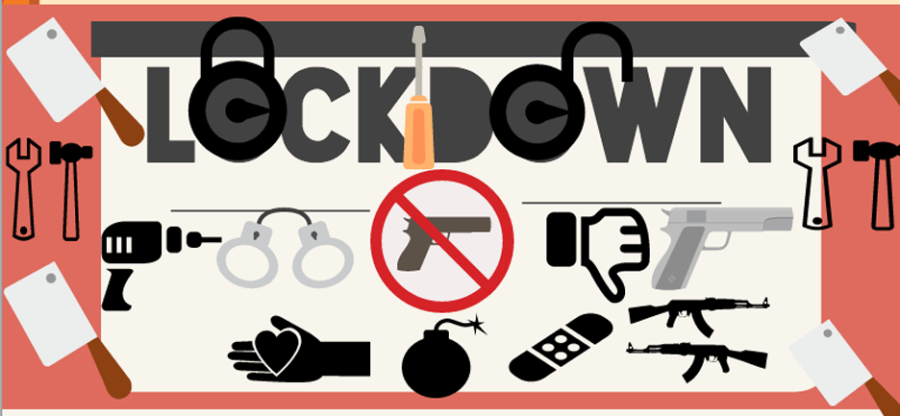Lockdown procedures advance
Mar 25, 2015
High school students of the 70’s hid under their desks during “duck and cover” drills meant to prepare them for a nuclear attack.
Today, teachers lock the doors to their classrooms, turn off the lights, and have the students sit quietly on the floor away from all windows.
Legislators in Minn. and other states throughout the nation have passed laws for K-12 students to perform annual lockdown drills. Such drills are necessary requirements to ensure school safety.
“Lockdown drills are valuable, because if a critical incident were to occur here, we would know how to respond efficiently,” said Mr. Jason Tait, School Liaison.
By law, Minnesota schools are required to hold five lockdown drills every school year to prepare for safety threats.
“Five drills are enough, but we could always have additional training,” said Mr. Trenton Lawson, Assistant Principal.
“Active shooter” drills have also become the norm in many school districts. As of now, HHS has not held an active shooting drill during school hours.
In an active shooter drill, one or more individuals with fake weapons act as school shooters and actively seek out students and staff to ‘take hostage’ or ‘attack.’ Lockdowns traditionally cover a wider range of situations than active shooter drills, including suspicious persons on school property or times in which staff need to keep students out of the hallways (locker searches, etc.).
“I would not be open to having a school shooting drill during school hours unless all stakeholders agree to and are well-informed about the drill ahead of time.” Lawson said.
During the fall of 2013, staff, students and police trained in a scenario of an active shooter at Alice Smith Elementary with about 30 students from the Mainstreet School of Performing Arts role-playing as students. Personnel representing Hopkins Police, Hopkins Fire, and Hennepin EMS were present to conduct the scenario.
“Preparation is key to maintaining a high level of school safety,” Lawson said.
The Minnetonka Police Department SWAT Team has conducted a walk-through of HHS to familiarize themselves with the school’s layout.
“Every so often the police department coordinates with the school, and we conduct a walk through of the high school and practice room clearing and active shooter response,” Tait said.
Students at HHS argue that mandatory lockdown drills are more frightening than helpful.
“When the assistant principal announces that there is a lockdown drill in place, it’s sometimes nerve wracking because you never know what’s going on outside of the classroom,” said Bill Atkins, senior.
Some students believe lockdown drills are simply a time for students to talk to their friends and socialize.
“I was in a class where students did not even care whether there was a lockdown drill or not, they were just goofing off,” said Malcom White, senior.
Even though some students may feel uncomfortable or don’t take drills seriously, Lawson stresses that lockdown drills must be in place for the safety of students and staff.
“School should always be a safe place for students and staff,” Lawson said.


